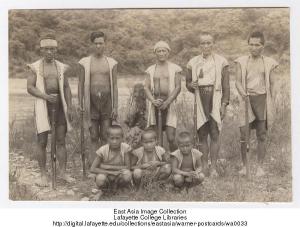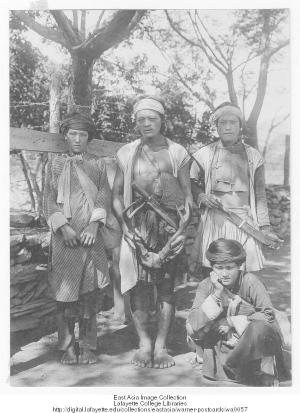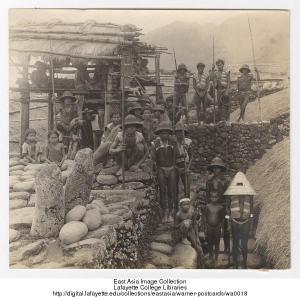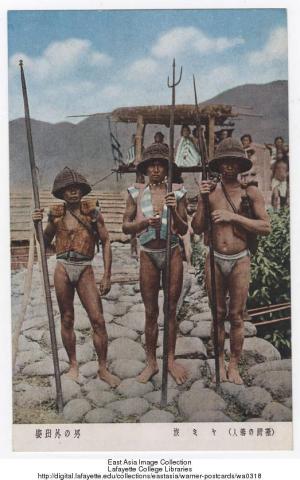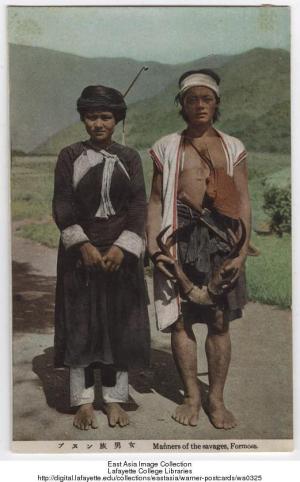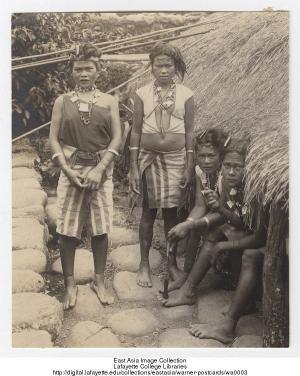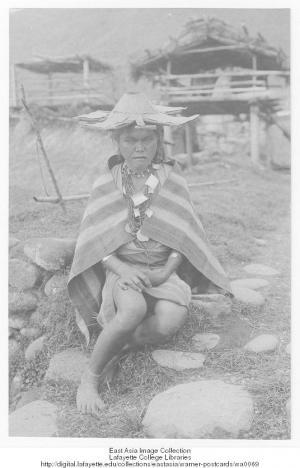蘭嶼雅美族男女
詳細資料
[英文]Orchid Island men and women
[英文]In the background is a tagakal, or resting platform (see 0018). The three seated women are conspicuous for their neck ornaments, of which Yami had a variety. The woman on the left in red sports a rakaraka-no-mata-no-gagit, or nautilus-shell bead necklace. All three women wear button necklaces and neck ornaments called @radarada-no-agarau@, each made with berries of the agarau grass and shells (Kano 1956, pp. 113-16). The man on the viewer$s left is wearing what Kano Tadao called $war regalia$ and $fighting costume.$ The woven helmet is called a minaovad, and the armor vests are made of dried fish-skins or rattan. The spears are called @Chinrorot@ and vary @considerably in size and shape. They may be long or short, straight or curved and some are indented. The head is of iron attached to a bamboo or wooden shaft about 2ms. long.@ Kano continues, @a Yami always carries a spear and swords with him on setting out from his home. Evil spirits are greatly feared and his weapons can serve to exorcise dreadful and invisible beings.@ Elsewhere, Kano refers to these invisible beings as @anito@ the malicious ghosts of dead ancestors. (Kano 1956, pp. 134-37; 444). This postcard thus appears to represent a jumble of Yami practices in one posed scene: martial, religious, sartorial, and architectural. H. Suzuki emphasized the religious significance of the pictured Yami weaponry is his caption to this same photograph, without mention of other uses (1935, p. 112). This same image, colorized, but with the Japanese caption cropped off, was still being reproduced and sold in Taiwan as late as December, 2007, under the imprint: @原味台湾 Aboriginal Peoples of Taiwan@. The back matter on these reproductions is trilingual: @雅美族人/ヤミ族男女/Yami people.@
Published by Katsuyama Photo Studio 2-Chome. Akachimachi Taipeh.
発行台北市勝山写真館
CARTE POSTALE
1/2 divided back 郵便はがき
Place Postage Here: Made in Japan
9公分 x 14公分

